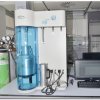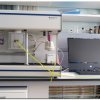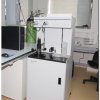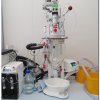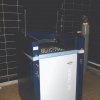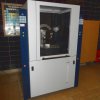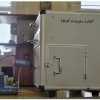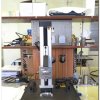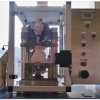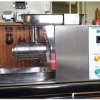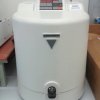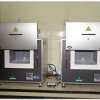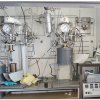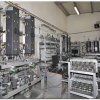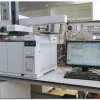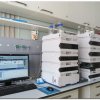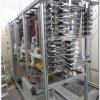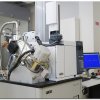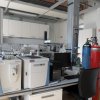Infrastructure
The CATPRO infrastructure develops and provides technologies in four major areas:
- CATALYST SYNTHESIS AND PREPARATION aimed at scaling up laboratory procedures from a few grams to several hundred grams up to kilograms including the optimization of raw materials, technological parameters and techniques.
- CATALYST FORMING is focused on suitable forming techniques and optimization of binders to obtain industrial-like catalysts. The application of relevant catalyst particle forming techniques (for the subsequent long-term testing of catalytic activity) together with the synthesis scale-up is a crucial for the verification and development of any catalyst to be applied industrially.
The areas (1) and (2) also include basic catalyst characterization (e.g. physical properties determination, texture characterization) to provide an immediate feedback. - CATALYST TESTING and process development is oriented on the investigation of the scaled-up and/or shaped catalysts and determination of their activity and selectivity in both short- and long-term tests including their deactivation.
- IDENTIFICATION OF PRODUCTS based on modern instrumental analysis: is focused on enabling a detailed description of the reaction networks by using advanced tools, such as GC-MS, GCxGC-MS and HPLC-MS to identify all important components of any complex product or raw material mixtures, e.g. bio-oils from the pyrolysis of biomass. Detailed analysis is necessary for the determination of process/catalyst selectivity, understanding the reaction mechanism and designing the subsequent separation steps.
Catalyst Synthesis
1. CATALYST SYNTHESIS AND PREPARATION
Autoclaves
They are with teflon lining to make possible synthesis requiring corrosive media (e.g. zeolites). Apart from the small reactors (100 ml), the key equipments are the large stirred autoclaves (1 l and 5 l) that are used to scale-up the synthesis procedures. The autoclaves can be heated up to 200 °C (1 l) or 350 °C (5 l) and the pressure limit is 2.5 MPa. In this way, up to 100-150 or 500-750 g of zeolite catalyst can be obtained from one batch. In addition, the syntheses can be further scaled up in a 50 l stirred stainless steel reactor that can be heated up to 150 °C and operated at pressures up to 2.5 MPa. The filtered catalyst can be spray-dried in an oven to obtain fine catalyst powder (< 30 microns).
Precipitation apparatus
It allows synthesis of catalysts by the precipitation method (1 to 5 l). The catalysts can be prepared from up to 2 solutions of precursors (liquid feeds up to 1 l/h) and 1 gas feed. The set-up is equipped with temperature (5 to 120 °C) and stirring (50-250 r/min) control and the addition of the solutions can be controlled by the pH measurement (i.e. precipitation is performed at constant pre-set pH value). The apparatus is equipped with pressure filtration of the precipitate.
In-house characterization techniques
The various techniques will provide immediate feedback on the catalyst preparation. These include determination of the structure (by XRD), chemical composition (XRF) and textural properties (i.e. BET surface area by N2 physisorption, Quantachrom AutoSorb iQ, Hg porosimetry, Micromeritics AutoPore IV 9510). In addition other methods describing the reducibility of the active phase, its dispersion or the acidity of the catalyst can be determined by TPD and chemisorption measurements, respectively (Micromeritics AutoChem 3950HP) to allow optimization of the synthesis procedures.
Photogallery of CATPRO Infrastructure (1)
Catalyst Forming
2. CATALYST FORMING / SHAPING
Kneader
This instrument (ongoing public tender) allows the preparation of a homogeneous catalyst paste in amounts ranging from 100 to 1000 ml under controlled conditions (temperature 5 to 80 °C, adjustable blending rate). The catalyst paste is then transferred into the extruder.
Extruder
The paste is processed by extruder (Caleva VDE). By the choice of a matrix (cylindrical, trilobes, etc. and its diameter 1 to 5 mm) the extrudates of desired diameter and shape are formed at controlled temperature (5 to 80 °C) and extrusion rate. After cutting, drying and calcination they are ready for use.
Pelleting machine
The machine (Pharservice MI-204) allows preparing catalyst pellets (min 350 pellets/h) with cylindrical diameter in the range of 2 to 10 mm and adjustable height from the starting catalyst powder.
Complementary characterization
The strength of the extrudates and pellets can be evaluated in a specific equipment (Micro-Epsilon UMZ/3k) according to ASTM D4179, D6175 a D7084. Naturally, the characterization methods to provide feedback on the catalyst preparation given above will be available for the shaped catalysts as well.
Photogallery of CATPRO Infrastructure (2)
Catalyst Testing
3. CATALYST TESTING AND PROCESS DEVELOPMENT
Experimental units for evaluation of catalytic activity
At the heart of the infrastructure is a set of various-size dedicated bench-scale flow units allowing investigation of heterogeneous catalysts and catalytic processes in the fixed-bed mode. They can be operated in a wide range of reaction conditions - temperature up to 600 °C, pressure up to 20 MPa and utility gases H2, H2/H2S, N2, air and ethylene from gas pipeline and any other from gas cylinders. The units can be divided into two basic groups - units using sulphur-containing feedstocks (i.e. for hydrotreating and hydrocracking processes and catalysts testing) and units using only sulphur-free feedstocks (i.e. hydrogenation and isomerization processes using typically noble metal catalysts as well as other reactions e.g. condensation reactions, CO conversion reactions, partial oxidation, etc.). The flow units are fully automated and operated by experienced staff 24/7. They can be divided also based on the amount of catalyst they use into small units (5 to 20 g catalyst) and large units (100 to 200 g catalyst). The reactors are built by the company Parr.
In addition, the infrastructure includes also an adsorption unit, a distillation and microreactor unit.
Microreactor unit consists from six independent reactors. Construction material is SS316. The volume of catalyst can be from 1 ml to 10 ml. Operating pressure is in the range 10 to 195 bar, operating temperature is up to 500 °C in down-flow and isothermal mode. Each reactor has own preheater, maximum operating temperature is 350 °C. Each microreactor houses three gas lines: high flow Hydrogen and Nitrogen (max. 100 Nl/h), low flow hydrogen (max. 2 Nl/h) and hydrocarbon (max. 50 Nl/h). The liquid feed section is designed to handle feedstock showing viscosity higher than 100mPas. Flow rate of feed can be from 3 to 150 ml/h. Liquid feed line is designed to handle temperature from 0 to 100 °C. The outlet effluent from the microreactor is routed to the high pressure separator for gas/liquid separation. Separation temperature is regulated from 0 to 100 °C.
Chromatographs (GCs) for analyses of gases and liquids
The infrastructure is equipped also with gas chromatographs ensuring immediate analysis of the products and a feedback for the operation of the experimental units. The chromatographs consist of seven single or dual channel GCs (Agilent) equipped both by packed and capillary columns that can be connected to the experimental units to provide on-line analysis of gaseous effluents from various chemical processes – hydrogenation, hydrodesulphurization, cracking processes, hydrocracking, isomerization, deoxygenation, Fischer-Tropsch process etc. Furthermore, there are six dual channel GCs (Agilent 7890) equipped by capillary columns and various injection modes (split/splitless/on-column) that provide operational at line analysis of a wide range of liquid products. The set of GC instruments is completed by two dedicated GCs for the simulated distillation (SIMDIS) method useful when analysis complex products, e.g. from hydrocracking. Moreover, the infrastructure for detailed product identification is described below.
Photogallery of CATPRO Infrastructure (3)
Identification of Products
4. PRODUCTS IDENTIFICATION
GC/MS-IT (ion trap) system (Trace ITQ 1100, Thermo Scientific)
This system is suited mainly for the identification of unknown components in less complex samples or for monitoring of target compounds in impure matrices. Its MSn technique allows to routinely test for compounds that cannot typically be detected with other GC/MS techniques. MSn provides the ultimate in selectivity for target analytes, eliminating false positives and false negatives.
Comprehensive GCxGC/MS-TOF (time of flight) system
The system (Pegasus 4D, Leco) with a cryogenic jet modulator, which is suited for a variety of applications, including the analysis of complex matrices such as petroleum fractions or various natural products that are difficult to analyze by conventional one-dimensional GC or GC/MS techniques. The efficient separation system enables to separate the components of the sample both on the basis of their boiling point and their polarity. Supported by the highperformance software, it for exmple does the group-type analyses of petroleum products based on the number of benzene rings or the number of carbon atoms in the side alkyl chains of aromatics. The separated groups may also be quantified and visualized in the 2D or 3D format.
Bench-top HPLC/MS system
The combination of ultra high-performance liquid chromatography (UHPLC, Dionex + Orbitrap Exactive Plus, Thermo Scientific) on the normal and reversephase columns with high resolution mass spectrometry will be the powerful tool for separation, identification and quantification of components and their groups in the most complex samples, mainly from the biomass processing. Thanks to its Orbitrap mass analyzer, the Exactive Plus system delivers highresolution, accurate-mass full-scan MS for fast, precise and reproducible results and tremendous analytical confidence. System will be equipped by various ionization techniques for different types of organic compounds. The extremely high resolution of the MS detector will also enable the user to analyze samples by direct injection without LC separation.Moreover, all hyphenated techniques (GC,LC/MS) can find their application also in other fields, such as water and waste analysis, environmental protection, food safety, pharmacy, biochemistry etc.


